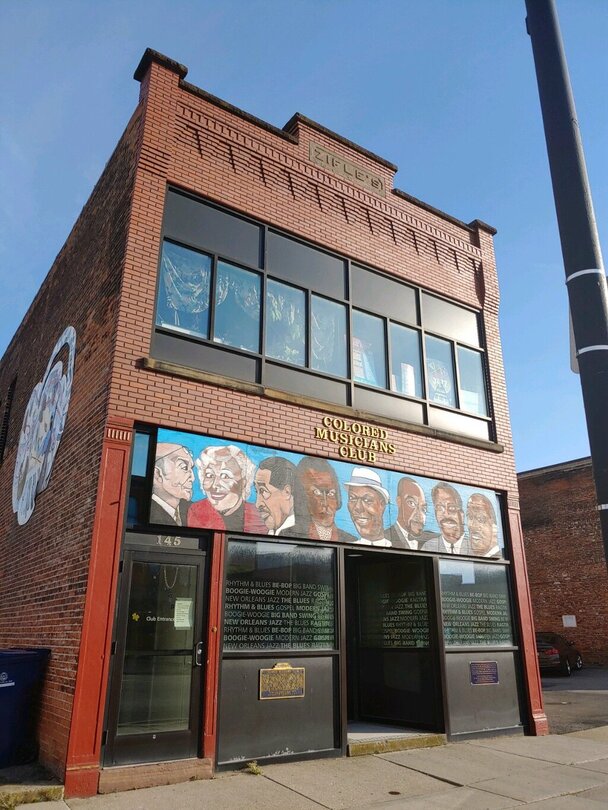
After more than 100 years, the Colored Musicians Club is not only going strong, but set on a path to expand, both physically and intellectually.
Credit- Courtesy Colored Musicians Club
After more than a century as a social club and organization, the most charming brick on the Broadway block is getting a facelift. Official plans for a multi-million-dollar expansion of the 85-year-old home of the historic Colored Musicians’ Club, Inc. (CMC, or the Club) will soon become a reality. Recent acquisition of much-needed financial resources finds the corner of Broadway and Michigan digging down deep into its old roots in hopes of unearthing both new and buried treasures; melding the past and the future in real time. Linda Appleby, CMC board member and festival committee leader, is encouraged by the prospect of taking the CMC’s new expansion and renewed vision to the next level. She recalls the numerous conversations amongst supporters of this national treasure. “I've been on the Club's board for 10 years, and for the past 12 years or more, there has been discussions regarding the elevator, and subsequent improvements to our beloved home away from home.”
Acting board president Danny Williams is seeing the steady growth. “The support for our century-old organization has been phenomenal and unprecedented,” says Williams. “We’re getting planned visits, walk-ins, and calls from the world over. Sometimes, people have questions about our open rehearsals and house bands—they are eager to join the legacy of the old Local 533. It’s about pride in our city, and a deep homage for what this establishment represents for musicians of the past, present and future.”
The club is currently basking in the light of its recent designation on the National Register and State Register of Historic Places. As a place of international significance, the club hosted a celebratory reception at the modest Italianate structure on October 15 of this past year, welcoming a who's who of local, state and national politicians, community leaders, media and music elite.
Among other celebrations, the club held a Centennial Grand Gala at the Hotel Lafayette in the spring of 2017. A few months later, the club produced a six-day midsummer festival, headlined by the industry's top names in jazz. “And we’re still celebrating!,” noted Allita Steward, who has been spearheading the club’s development division for a number of years. The milestones that have been reached by the Colored Musicians’ Club are certainly noteworthy (no musical pun intended). Not many organizations have been able to sustain themselves through such adversity, while continuing to flourish. Steward should know. As an award-winning strategic planner, she recognizes the importance of slow growth and what she refers to as “prosperity waves.”
“Right now, we’re in the midst of a wave of prosperity. When the waves come, we’ve got to let them to carry us to new destinations. We have the potential to reach uncharted territory. The next several decades for the City of Buffalo and the Colored Musicians’ Club are golden.”
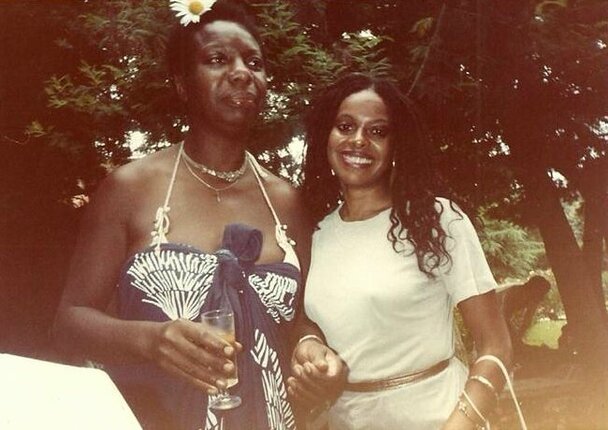
Sweet memories from past CMC Jazz Fest performers: International performer, and Western New Yorker, Janice Mitchell (right), spending off-stage time with the late Nina Simone in France in the early 1980s.
Credit- Courtesy Colored Musicians Club
Physical Changes
For the club, that future includes both the physical and the intellectual and artistic. The physical future of the Historic Colored Musicians Club lies in the completion of the second phase of its restoration plan, which begins with the addition of a much-needed elevator and rear entrance, both fully funded through a combination of public and private sources. With the elevator, CMC visitors may be able to bypass the squeaks and creaks of the “call and response," battle-tested stairs and upstairs venue floors. But if they're lucky, they will continue to enjoy the old trap door—that stays—as part of a bonus tour with the great George Scott.
Another focus of the second restoration phase is expansion, whereby the footprint of the existing structure will be made to extend into the club's adjacent surface parking lot. This highly anticipated improvement promises to add space, allowing for larger audiences at upcoming festival performances, special events and the long-standing, weekly “Sunday Jam Sessions.” Plans for the CMC’s new expansion include a spectacular two-story atrium, a well-appointed “Artist Green Room,” chic decor and a more prominent stage with an enhanced lighting plan, including fixtures and infrastructure. With this, the club stands to become a more attractive performance destination for an already extensive roster of internationally acclaimed musicians.
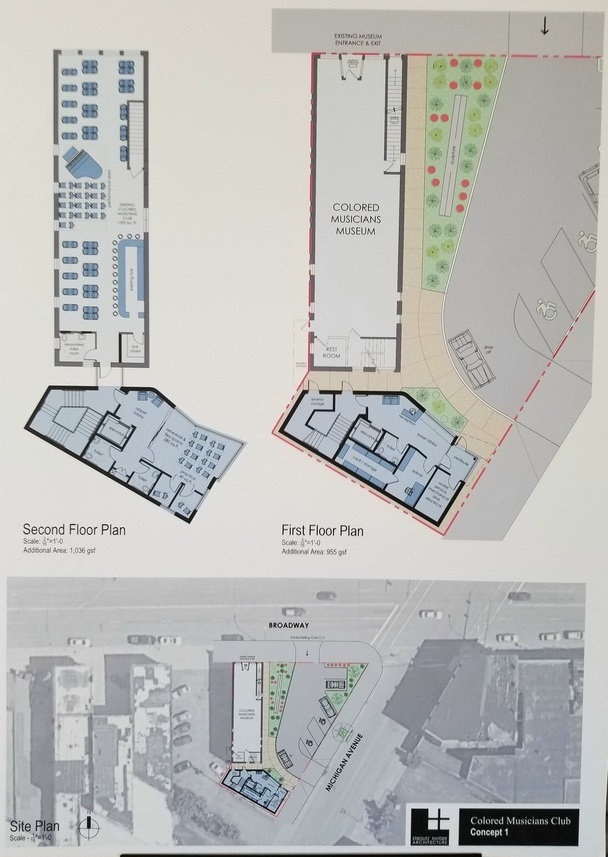
Phase 2 of the club’s restoration plans include an addition to the south elevation of the building, which will include a much-needed elevator and a spectacular, two-story atrium.
Credit- Courtesy Colored Musicians Club
On the menu these days, you may not find the once-popular “trotter plate”—a healthy portion of pigs’ feet and beans, served with a beer—for 25 cents. These days, during festival season, the club offers updated global cheese boards, complete with pickled okra, olives, artichokes, fruit and artisan bread. That, along with beer, wine and spirits may be enjoyed at a venue table, or the bar. George Scott boasts that it's the “coldest beer in town.”
The historic bar—where the legends sat—will remain the principle gathering place for the masses of musicologists convening for warm-ups, whisperings and wind downs after hours. The second-floor entertainment space will overlook the two-story atrium, where new bathrooms and state-of-the-art office space will be located.
Board member Linda Appleby is ecstatic: “The idea that the club is in actual forward movement now regarding renovations and the ever-elusive elevator is extremely exciting. We've always known about the club's historic significance, and now hopefully this will be the project that will propel others to come and visit, and love what we have loved for so many years.”
Construction on the most charming brick on the Broadway block is set to begin in the fall.
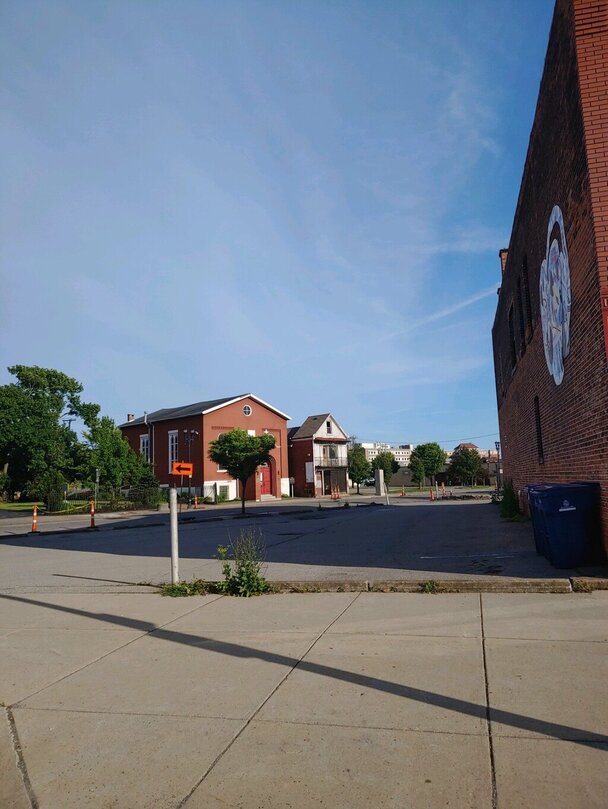
This view from Broadway shows the parking lot space that will be the part of the club’s expansion plan. The historic Michigan Street Baptist Church is visible in the background.
Credit- Courtesy Colored Musicians Club
An Artist-in-Residence & A Musical Tribute
And if one thought the golden age left with the likes of Dizzy Gillespie, Billie Holiday, Ella Fitzgerald and Miles Davis, it's time to take a walk up the iconic Broadway staircase to enjoy a night of jamming and engage in some socially conscious banter. But there are even bigger plans on the horizon. The CMC International Jazz Fest will run from October 11-13 this fall and will see the genre’s contemporaries setting up shop for a series of performances. The festival committee is particularly excited to announce that Nicholas Payton will be the featured Artist-in-Residence.
The club is looking forward to the wealth of knowledge and expertise that Payton offers in the line of music history. A master trumpeter and multi-instrumentalist, Payton is a graduate of the New Orleans Center for Creative Arts, and the University of New Orleans. His residency promises to bring issues of jazz classification to the forefront (genres and subgenres), as he is the originator of the Black American Music (or BAM) movement. In his own words, the BAM movement emerged from the growing propensity to “box-in” what he considers BAM; a music borne out of a cultural tradition, similar to well-established genres, like Brazilian Music, connected directly to geographic locations or linguistic connections.
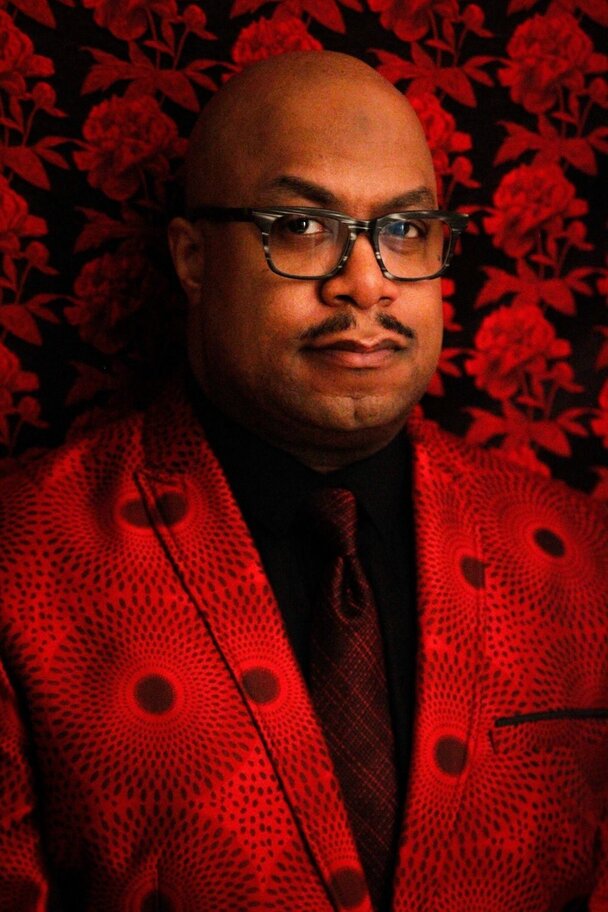
Master trumpeter Nicholas Payton will be named Artist-in-Residence at this October’s CMC International Jazz Fest. His residency promises to explore issues of jazz classification, in addition to providing some fine music.
Credit- Courtesy Colored Musicians Club
“Ancestry is what governs art in African culture. Jazz is political and has no roots,” he argues. His thought-provoking revelations lead us to question our true understanding of jazz as a name, and jazz as a genre.
“One problem with jazz is that there will always be an argument as to what is and what is not jazz, which prevents an authentic analysis of the art. Once someone gets past whether or not they like someone’s music, the jazz tradition always becomes a distraction. Even if artists say that their music is not jazz, any association with the word will subjugate an artist to an argument which can never be solved ...”
When the music moves, Payton contends that it moves with its culture, making nomenclature both a slippery slope and a dead end. The music is accessible to everyone, and the paths to musical creativity have no boundaries, so why must genre names impose those limits? Certainly, this music lives and thrives in the Queen City. As such, Payton will play—amusing our ears with his trio, and joining vocalist Cyrille Aimée for a unique duo performance.
Committed to cutting-edge artistry and eclectically innovative repertoire, the fall festival will also include a musical celebration in honor of the late, great Reynold Scott, who passed away last June. The festival committee has agreed to again present a curated show—a “never before seen” collection of music. Led by Abdul Rahman Qadir, a group will play some of Rey’s original tunes, reimagined, and will collaborate to take the music to its far reaches. Artistic director Walter Kemp 3 calls the collective “Reyvolation--outer play-ces” and brings with him the ability to maintain a unique retrospective, while artistically reinventing the music in a way that lends itself to futurism. This hand-picked ensemble represents the group of touring musicians who collaborated with Rey Scott, traveling with him on one of many tour dates with the Sun Ra Arkestra, and throughout New York City and the Queen City, with one of Rey's many ensembles.
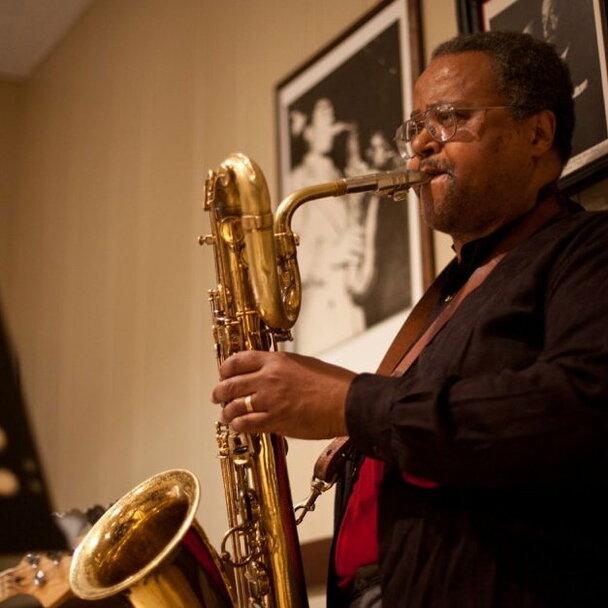
Another highlight of this year’s Jazz Fest will be a musical tribute to the late Reynold Scott.
Credit - Courtesy Chamber Music America
The unit will perform with a freedom indicative of Scott, and includes Abdul Rahman Qadir on drums, woodwind artist Steve Baczkowski, pianist Walter Kemp 3, bassists Sabu Adeyola and Rishon Odel, percussionist Ravi Padnamabha and guitarist Greg Millar. Along with the unit, Kemp felt it was important to “double down" on woodwinds, which were Rey Scott's specialty. The curated show will host guest visionary, woodwind artist and educator Brent Birckhead, who will present his quartet as well.
Renowned bassist and legend Juini Booth, who also toured with Rey Scott and the Sun Ra Arkestra, will be making a featured appearance at the festival with the George Spanos Trio. Booth has played and recorded with the likes of Art Blakey, Chuck Mangione, Freddie Hubbard and Gary Bartz, and has been a member of the Arkestra since 1989. Future plans call for the festival to become an annual event, to be held every second weekend in October.










